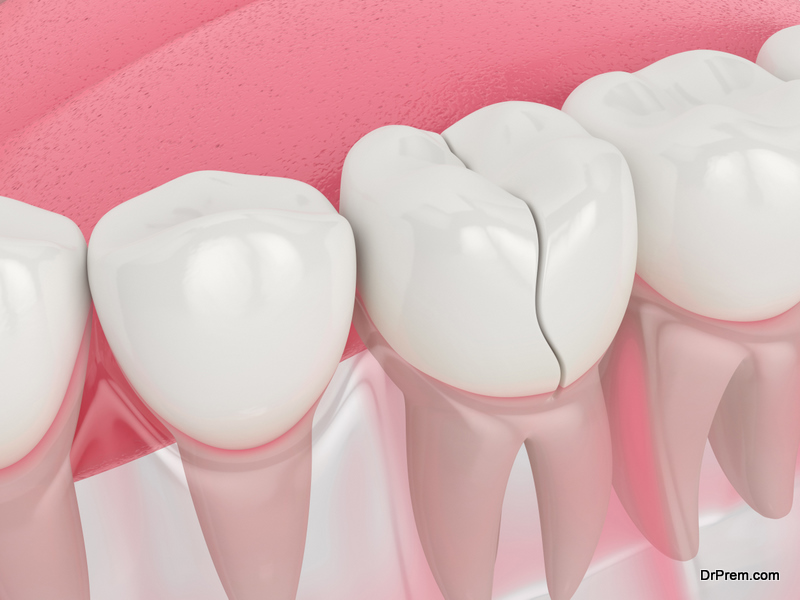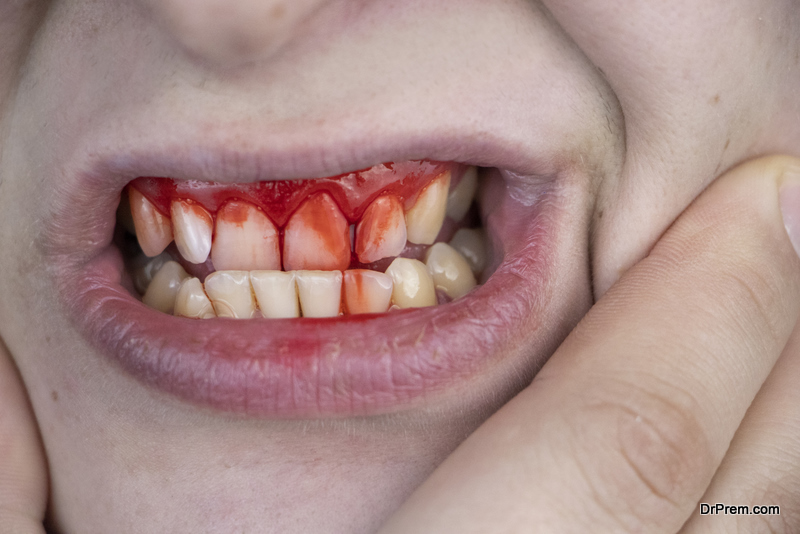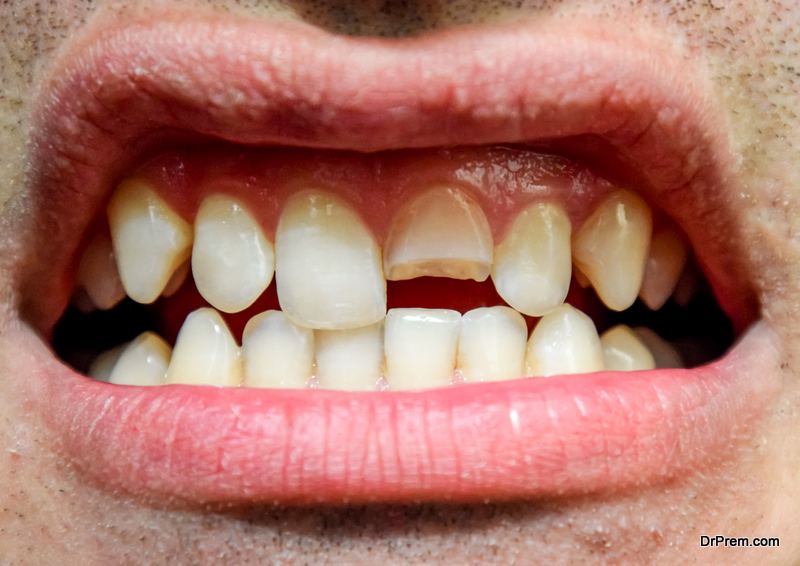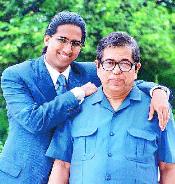Dental injuries, also known as dental trauma, indicate an injury to any part of the mouth, including the gums, lips, jawbones, tongue, and teeth. However, tooth injuries are usually the most common form of dental trauma.
Most dental trauma occurs as a result of sports, physical altercations, or eating especially hard foods. It is a common occurrence but, the costs of treating dental injuries can be quite high and often be far out of budget for many people. The costs depend on various factors such as the type of injury, the severity of the injury, and the number of follow-up appointments that might be necessary.
Types of dental injuries
There are many types of dental and oral injuries. The four most common injuries that occur are:
1. Chipped or cracked teeth
 Chipped or cracked teeth are usually the result of trauma to the mouth, such as force from sport or biting into a hard food item. This can also happen when a tooth has decayed severely and becomes very brittle. It is usually easily fixed by using a filling. If a tooth is chipped while eating something, and the chipped piece can be recovered, this piece can then be reattached depending on its condition. If the tooth has been internally damaged, a root canal may be needed.
Chipped or cracked teeth are usually the result of trauma to the mouth, such as force from sport or biting into a hard food item. This can also happen when a tooth has decayed severely and becomes very brittle. It is usually easily fixed by using a filling. If a tooth is chipped while eating something, and the chipped piece can be recovered, this piece can then be reattached depending on its condition. If the tooth has been internally damaged, a root canal may be needed.
2. Avulsions
Avulsions usually occur due to severe trauma to the mouth and refer to when a tooth or teeth are knocked out. Having a tooth knocked out is seen as a medical emergency, and a dentist should be contacted immediately. Reattaching a tooth is time sensitive and should be done within one hour of the avulsion occurring.
3. Dental luxation
 Dental luxation refers to the loosening or dislodging of a tooth. This can be solved using a splint to keep the tooth in place (also known as flexible splinting). In some cases, a root canal may be necessary. Dental luxation is divided into five categories; exclusive, lateral, concussion, subluxation, and intrusive.
Dental luxation refers to the loosening or dislodging of a tooth. This can be solved using a splint to keep the tooth in place (also known as flexible splinting). In some cases, a root canal may be necessary. Dental luxation is divided into five categories; exclusive, lateral, concussion, subluxation, and intrusive.
· Exclusive
An exclusive luxation occurs when a tooth has slightly separated from its ligament. The tooth is extremely loose, but the bony socket is still intact.
· Lateral
This type of luxation occurs when the bone that holds teeth in place has been fractured.
· Concussion
A concussion refers to the damage of the tissues that hold a tooth in place. In this case, the tooth is not loose and has not moved.
· Subluxation
A subluxation is a tooth that is loose but has not moved from its socket.
· Intrusive
When a tooth has moved upwards towards the gums and into its socket, this is known as an intrusive luxation.
4. TMJ Syndrome
TMJ syndrome, or temporomandibular joint syndrome, is when an injury is acquired to the joint that connects the jaw to the skull (the temporomandibular joint). This injury is often directly related to the teeth. It can occur as a result of injury to the jaw or teeth. It is also common when the jaw is misaligned. TMJ syndrome is also more common in people who have arthritis, chronic stress, and poor posture.
How are dental injuries treated?
 The treatment of dental injuries is heavily dependant on the nature or type of injury that has occurred. If dental luxation occurs in a permanent tooth, a root canal is usually necessary. This is usually not necessary in children under 12 with developing teeth.
The treatment of dental injuries is heavily dependant on the nature or type of injury that has occurred. If dental luxation occurs in a permanent tooth, a root canal is usually necessary. This is usually not necessary in children under 12 with developing teeth.
When a tooth has chipped or cracked, there are usually two ways in which this is treated. If possible, the chipped piece can be reattached. In a case where this can not be done, dentists will repair the tooth using a filling.
TMJ syndrome can often be treated at home using over-the-counter anti-inflammatory medication, ice packs, or stress relief techniques. If these treatments do not work, patients will need to seek medical care. A jaw specialist might use a splint to ensure the correct alignment of the teeth and jaws. Another option is physical therapy.
Avulsions are always seen as a medical emergency, and patients must try to reach a dentist as soon as possible to ensure success when reattaching the tooth. The chances of a tooth being successfully reattached after one hour are very slim. A root canal is also always necessary if a tooth has been knocked out. If the reattachment is unsuccessful, a patient may have to consider a denture to replace the tooth.
What does it cost to treat a dental injury?
Any one of these injuries to the mouth can be treated in several ways. Injuries of a more severe nature usually require a root canal, or in the worst case, a replacement. These kinds of treatments can end up being expensive. The severity of the injury and the amount of follow up appointments that will be necessary will ultimately decide how expensive the entire treatment will be. To cut costs, some dentists offer virtual consultations for follow-up appointments.
Having a dental insurance plan in place is beneficial for those who experience frequent dental issues. However, for people who seldom require treatment unless they are involved in an accident, a dental plan can seem like a waste of money. But, accidents can not be foreseen, and dental trauma can cost patients a lot of money. If left untreated, many of these injuries will become a serious health risk to a patient.
A lot of the time dental injuries are expensive to treat. Most patients do not have the funds to be able to cover these costs. Unfortunately, they are untimely occurrences that can not always be prevented from happening. Dental insurance is a safe way to ensure that the expenses will be covered if an accident occurs. Many injuries are very serious and can cause lasting damage to the nerves and gums if not treated promptly. Practicing good oral hygiene and care will strengthen the teeth, roots, and gums. Doing this can reduce the chances of dental trauma causing serious complications and the need for expensive medical care.
Article Submitted By Community Writer




